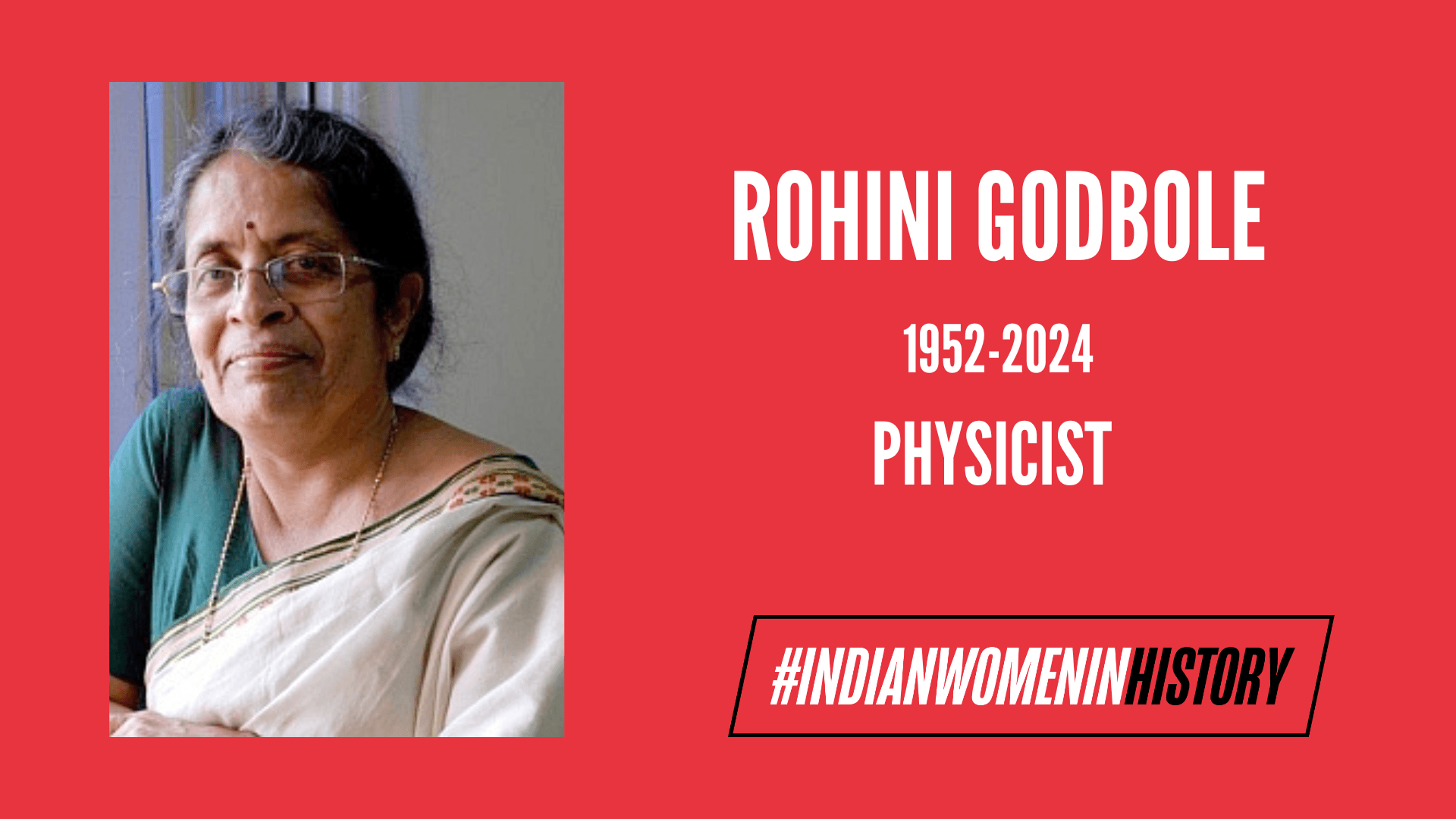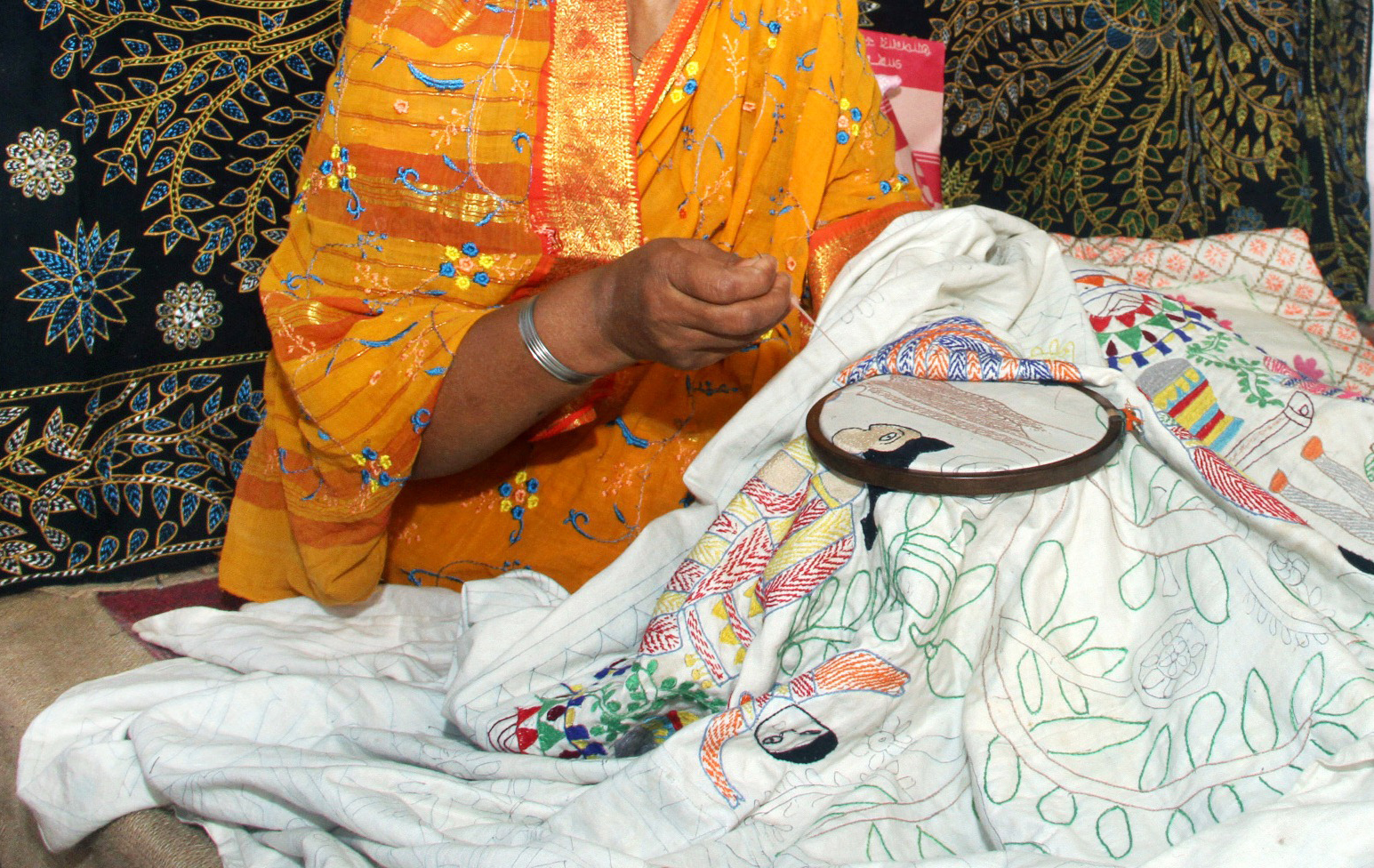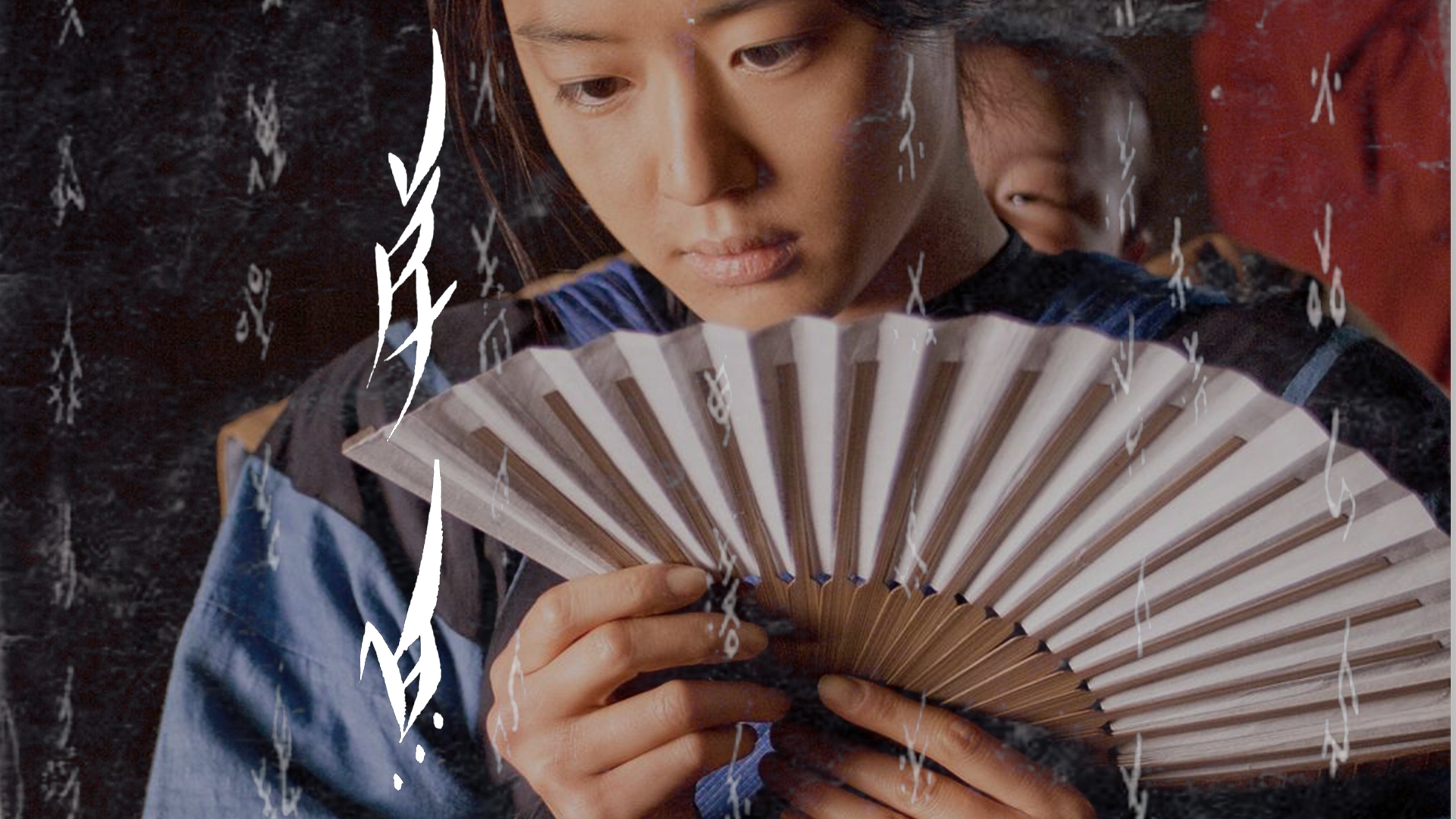Rohini Godbole was an Indian physicist and academic specialising in elementary particle physics, field theory and phenomenology, whose journey has inspired countless women to pursue careers in science. She embarked on her journey in the 1970s when women were highly underrepresented in general employment in India, the field of science was far from any woman’s dreams. Her passion and commitment towards her field set an example for countless women who wrestle with gender biases in the male-dominated field of science.
Godbole’s achievements span 48 years of her scientific career and paved the way for numerous aspiring female scientists.
Rohini Godbole’s early life
In the newly independent India, Rohini Godbole was born on 12 November 1952 in Pune to Madhusudan Ganesh Godbole and his wife Malati. She was the eldest after her sister, Mrunalini, to the other two, Kalpana, and Vibhawari. Hailing from a middle-class household in Pune, her parents valued the importance of education and encouraged all four sisters to pursue it. Her Father, Madhusudhan, had pursued Politics and Economics until his BA but had to discontinue due to financial constraints. Her mother, Malati studied up to 2nd year of college but despite being first in Sanskrit and winning a scholarship at BHU had to leave in the middle due to the social constraint of marriage. Later she became a school teacher after completing her Master’s in Hindi.
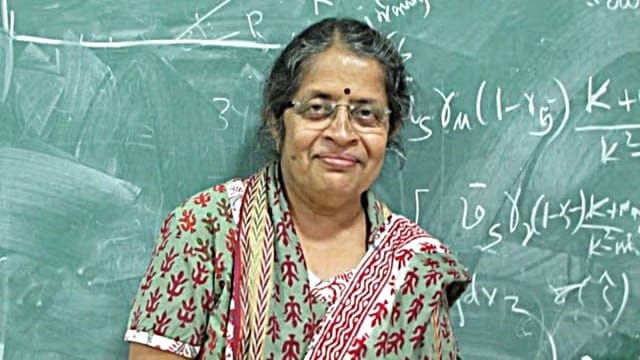
All of Rohini’s siblings are highly educated. Her eldest sister Mrunalini excelled in the field of Mathematics and taught it as well. Kalpana Godbole-Kelkar pursued Anaestheology and became a medical doctor and a professor, and the youngest Vibhawari Godbole-Thakar also worked as a science and mathematics teacher. Rohini came from a highly cultured and educated family, who encouraged learning and knowledge and always encouraged all of their kids to pursue different academic disciplines as they wished. In periods such as the 1950s, the views held by the Godbole family were highly progressive and empowering.
Touchpoints
“The seeds of my life in science were sown when I decided to appear for the “State Scholarship Examination” which used to be conducted in 7th grade,” says Ms Godbole. She graduated from the Huzurpaga (HHCP) High School in Pune. Rohini had never had any interaction with the world of science until she was in the 7th grade when she decided to appear for the state scholarship examination which had a section on general science which was not taught at her school.
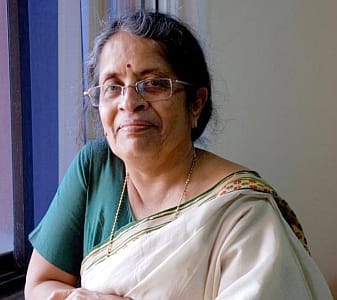
Since the highly reputed girls’ school only taught ‘home science‘ till the 7th grade, it was no wonder that no student from the school had received a scholarship before. Her maths teacher Mrs Sowani agreed to teach her outside school hours and on holidays for the examination. Mrs Sowani asked Rohini to come to her house as her husband, Mr Bhau Sowani, was known to be an excellent teacher of science. This was her first touchpoint with the field she came to fall in love with and opened her eyes to the world of science.
She gave her intermediate examination through the historic Sir Parashurambhau (S.P.) College and came in second further to pursue her BSc. from the Savitribai Phule Pune University. After her BSc. Ms Godbole applied to IIT Kanpur and IIT Bombay and chose to pursue her studies at IIT Bombay due to her proximity to her parents. She got the privilege of affording admission into an IIT because of her merit earning her the National Science Talent Scholarship, of Rs 200 or 250 per month which was a handsome sum for the time. She completed her master’s in physics as a silver medallist.
Godbole’s second prominent influence towards her excellence was her Professor S. H. Patil at IIT Bombay. Her admiration can be gathered quite well from her words, “If I’m a theoretical physicist today, it is because of the ‘home paper,’ that I did with him which made me see the beauty in the subject. I had to work quite hard to reach up to his standards.” Professor S. H. Patil was a great influence in her journey and discovering her passion for physics.
Rohini Godbole’s professional journey
In pursuit of her PhD, Rohini Godbole enrolled in the State University of New York (SUNY) at Stony Brook in 1974. She took to the world of theoretical high-energy physics like a duck to the water. She completed her PhD in 1979 and came back to India to join the Tata Institute of Fundamental Research as a postdoctoral fellow (PDF). Post-TIFR, she worked briefly at the Royal Institute of Science (Mumbai) and then joined the University of Bombay as a lecturer in 1982 at just 30 years of age.

Godbole worked as a young teacher and researcher for the next 13 years at the university. Even after joining the University of Bombay, she continued collaborations with seniors at TIFR and younger postdoctoral fellows and PhD students. The first Indian paper on an aspect of supersymmetry called R-parity violation was authored by her as well along with Probir Roy and Xerxes Tata as collaborators. In 1997, Rohini joined the Centre for Theoretical Studies or CTS at the Indian Institute of Science (IISc) in Bengaluru where she spent the remainder of her life.
While it cannot be quantified how Miss Rohini Godbole has contributed to the field of science and inspired uncountable aspirers from different walks of life to pursue their dreams, it is still worth noting that her scientific career spanned 48 years, during which she wrote about 350 articles, interviews, reports, conference talks, etc. Her work collectively has over 16,000 citations. Theory and Phenomenology of Sparticles, a well-known textbook on supersymmetry co-authored by Rohini with Manuel Drees and Probir Roy was published by the World Scientific Publishing Company and was also.
Women in Science
As a woman in science, in the early course of her career and education, she did not feel the male dominance of the field. She rather talks about it quite modestly.
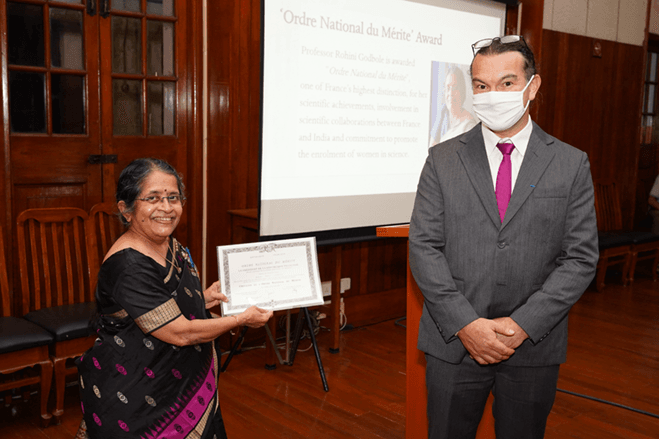
“We were a class of 17, just 3 girls, but we never ever faced any hostility or any bad treatment from our classmates. To be frank, gender was simply never an issue which affected our interactions. I have checked with my classmates (both male and female) and they agree with me. So this is not a fanciful reconstruction. Most of the teachers did not discriminate either, at least not in any obvious way.” The disparity may not have been felt but it was visible as clearly as the day. The gender ratio in itself spoke of women’s underrepresentation in the field.
According to data, in 1971, India’s female population stood at 264 million, of which 31 million women were part of the workforce but only 31,298 women were engaged in any form of work. Indian society progresses but the pace remains unfathomable.
Though her stance changed with the progression of her career, Godbole was seen to be more vocal about male dominance in the scientific field. She was among the members who submitted “INSA Report: Access of Indian Women to Careers in Science,” a first-of-its-kind document that dealt with issues that Indian women faced while pursuing science in college and as a career.
Godbole was also invited to speak about her experience as a woman physicist in India at the first international conference on Women in Physics organised by the International Union of Pure and Applied Physics in 2001. She spoke of her experience and narrated her success story as a physicist in India. Her sharing at the conference resonated with female scientists from developing countries such as Ghana, Mauritius, and Egypt. They expressed their inability to resonate with Western women due to contrasting cultural differences, but they resonated with Miss Rohini and felt empowered. This interaction inspired Miss Rohini to urge young students in India to pursue the field of science. She felt that Western female scientists were too far away and culturally disconnected for Indian students to resonate with, they needed to know about the women scientists in the country.
The Council of the Indian Academy of Sciences in January 2003 constituted a committee on “Women in Science“. This led to the formation of the Panel for “Women in Science” (WiS), in January 2005, to carry out recommendations made by the committee and to suggest measures for obtaining suitable solutions. Godbole was the founding chair of this panel. Under this panel, she along with Prof. Ram Ramaswamy started a project where they approached 200 women scientists and finally, 99 stories were published in a book called ‘Lilavati’s Daughters.’ The book was titled as a tribute to a female mathematician as per Indian folklore.
One of the most prominent contributions to bridging this gap was made by Miss Rohini, as the Chair of the committee that drafted the “Equity and Inclusion Chapter of the Science and Technology Innovation Policy of India,” STIP-2020.
In 2019, the government of India awarded her the Padma Shri, and in 2021, the French government awarded her the Ordre National du Mérite, mentioning her important role in furthering scientific ties between India and France. Apart from these, Rohini has acquired a long list of achievements, which can be found here.
Miss Rohini Godbole passed away on 25th October 2024 at the age of 71 in her hometown. As we remember her, we think of her advice to young women,
“Follow your dream. Choose a problem that excites you and not just what’s in fashion.”
References:
- Dr. Rohini Godbole
- https://www.ias.ac.in/public/Resources/Initiatives/Women_in_Science/Contributors/rohini.pdf
- Rohini Godbole
- Short CV – Rohini M. Godbole
About the author(s)
Ketki (she/her), is a curious political science student who loves exploring new ideas, places, and cultures. She has gained diverse work experience across event logistics, exhibitor relations, and research, always eager to learn something new. She has a soft spot for cats. In her free time, she loves to travel, listen to wildly different music and watch thrillers.
